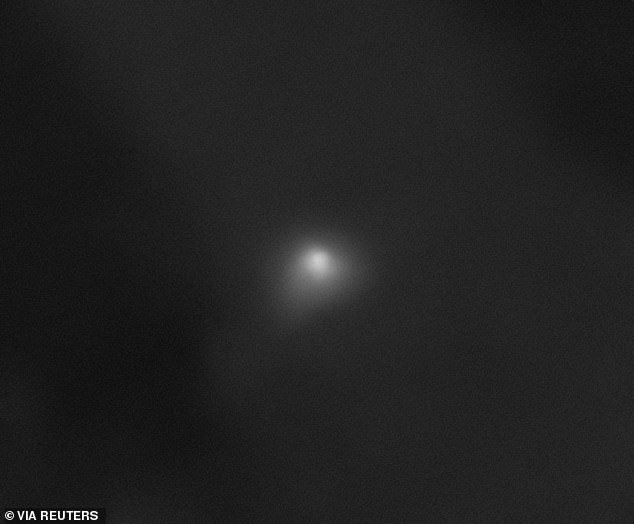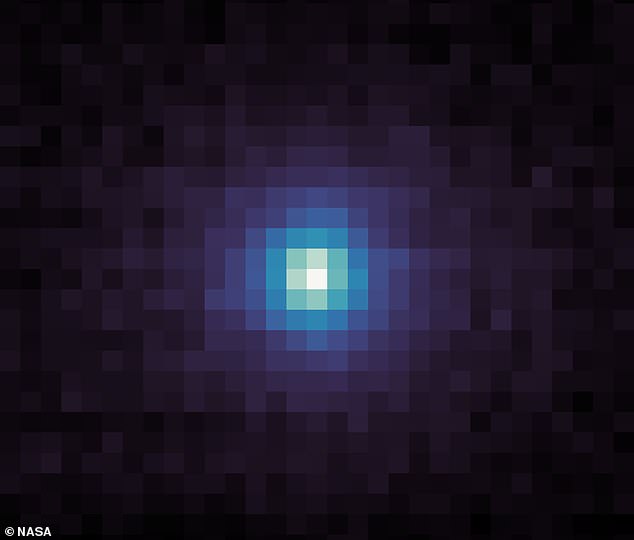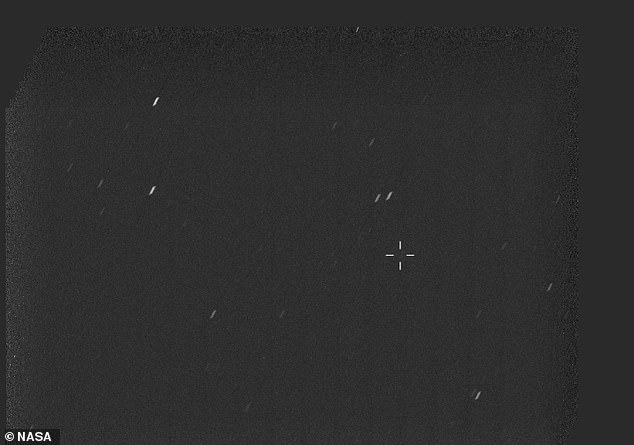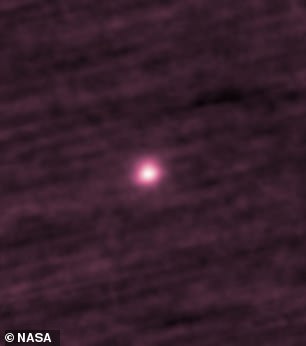NASA has shared its long–awaited images of the mysterious object zipping through our solar system – finally confirming its true identity.
Since it was first spotted in July, the object – dubbed 3I/ATLAS – has captivated scientists and internet users alike, even prompting Kim Kardashian to ask NASA for answers.
Many scientists maintained it was merely a comet visiting us from a different solar system.
However, others – including a member of US Congress and a Harvard researcher – were convinced that the object was an alien spacecraft.
Now, NASA has released photos snapped by three of its Mars spacecraft as they passed just 18 million miles away from the object.
These pictures can finally put any speculation to rest, as they confirm the object’s identity.
And unfortunately for alien hunters, the US space agency says that 3I/ATLAS is a comet.
‘We want very much to find signs of life in the universe… but 3I/ATLAS is a comet,’ said Amit Kshatriya, a senior NASA official, at a press conference on Wednesday.

NASA has shared its long–awaited images of the mysterious object zipping through our solar system – finally confirming its true identity. Pictured: a photo taken on October 2 by the HiRISE camera on NASA’s Mars Reconnaissance Orbiter

These pictures can finally put any speculation to rest, as they confirm the object’s true identity as a comet. Pictured: a photo taken on October 9 by NASA’s MAVEN spacecraft
NASA’s Mars spacecraft zoomed in on the comet as it passed just 18 million miles (29 million kilometers) away.
In the first image, snapped by HiRISE, the comet looks like a fuzzy white ball.
‘Captured at a scale of roughly 19 miles (30 kilometers) per pixel, 3I/ATLAS looks like a pixelated white ball on the HiRISE imagery,’ NASA explained.
‘That ball is a cloud of dust and ice called the coma, which the comet shed as it continued its trajectory past Mars.’
Further analysis of these pictures should allow NASA to estimate the size of the comet’s nucleus – its central core of ice and dust.
NASA’s MAVEN spacecraft, meanwhile, snapped the comet in two unique ways using its UV camera.
‘First, IUVS took multiple images of the comet in several wavelengths, much like using various filters on a camera,’ NASA explained.
‘Then it snapped high–resolution UV images to identify the hydrogen coming from 3I/ATLAS.’

Captured at a scale of roughly 19 miles (30 kilometers) per pixel, 3I/ATLAS looks like a pixelated white ball on the HiRISE imagery. That ball is a cloud of dust and ice called the coma, which the comet shed as it continued its trajectory past Mars

Down on the surface of Mars, NASA’s Perseverance rover even caught a snap of the comet, using its Mastcam–Z camera
Scientists now hope to be able to study a combination of these images to identify a variety of molecules and better understand the comet’s composition.
Down on the surface of Mars, NASA’s Perseverance rover even caught a snap of the comet, using its Mastcam–Z camera.
‘The exposure had to be exceptionally long to detect such a faint object. Unlike telescopes that track objects as they move, Mastcam–Z is fixed in place during long exposures,’ the space agency added.
NASA has also recently shared photos of the comet taken by its STEREO observatory, and its SOHO spacecraft.
Speaking to AFP, Thomas Puzia, an astrophysicist who led the team at the Chilean observatory that made the discovery, described the widespread discussion surrounding the comet as ‘amazing’.
However, he said: ‘It’s very dangerous and to a certain degree misleading to put speculations ahead of scientific process.
‘The facts, all of them without exception, point to a normal object that is coming from the interstellar space to us.’
He added the comet was ‘very exceptional in its nature, but it’s nothing that we cannot explain with physics.’


NASA has also recently shared photos of the comet taken by its STEREO observatory, and its SOHO spacecraft
The idea that the comet could have been an alien spacecraft were driven by Harvard Professor Avi Loeb – who remains unconvinced by NASA’s explanation.
‘Obviously, it could be natural,’ he told AFP.
‘But I said: we have to consider the possibility that it’s technological because if it is then the implications for humanity will be huge.’

